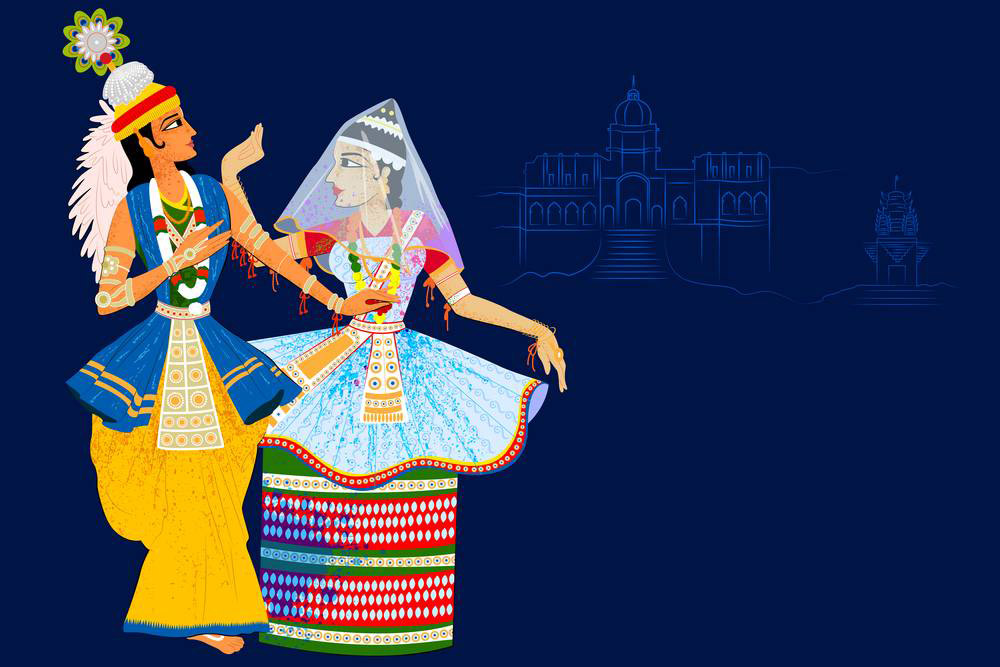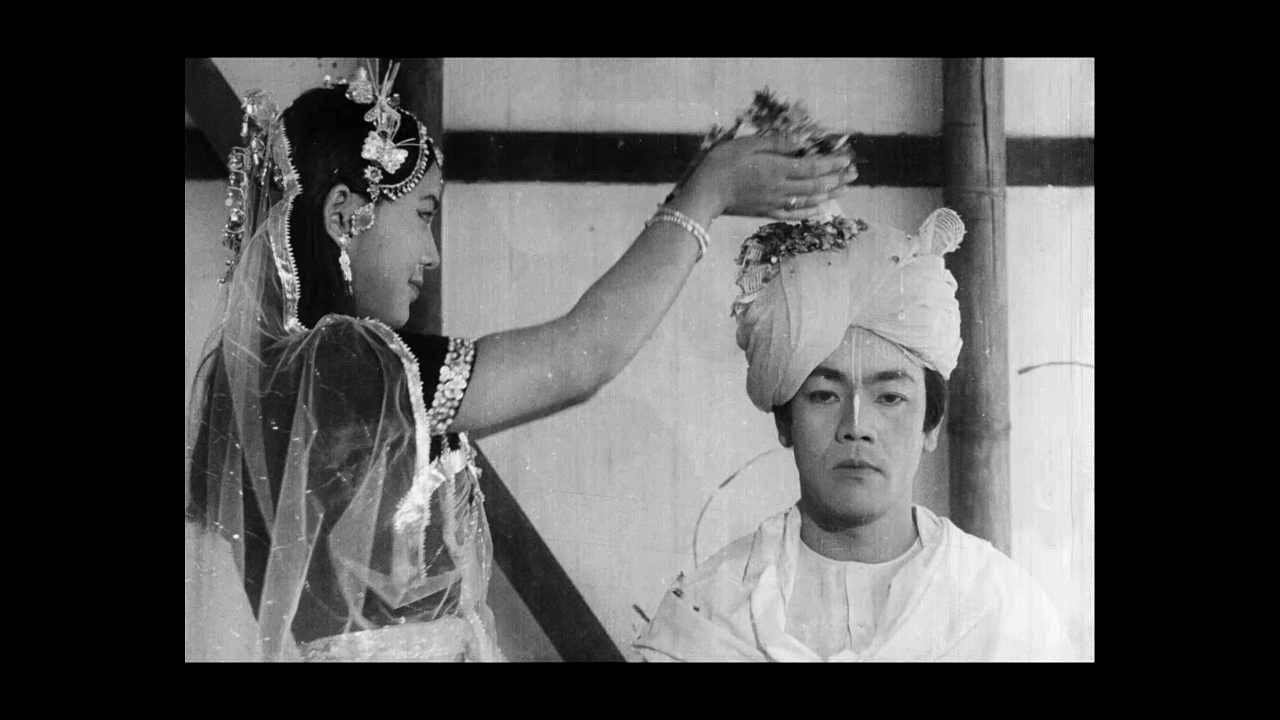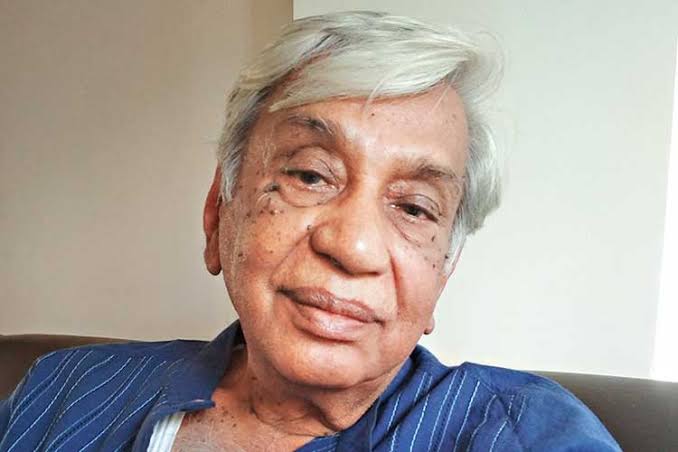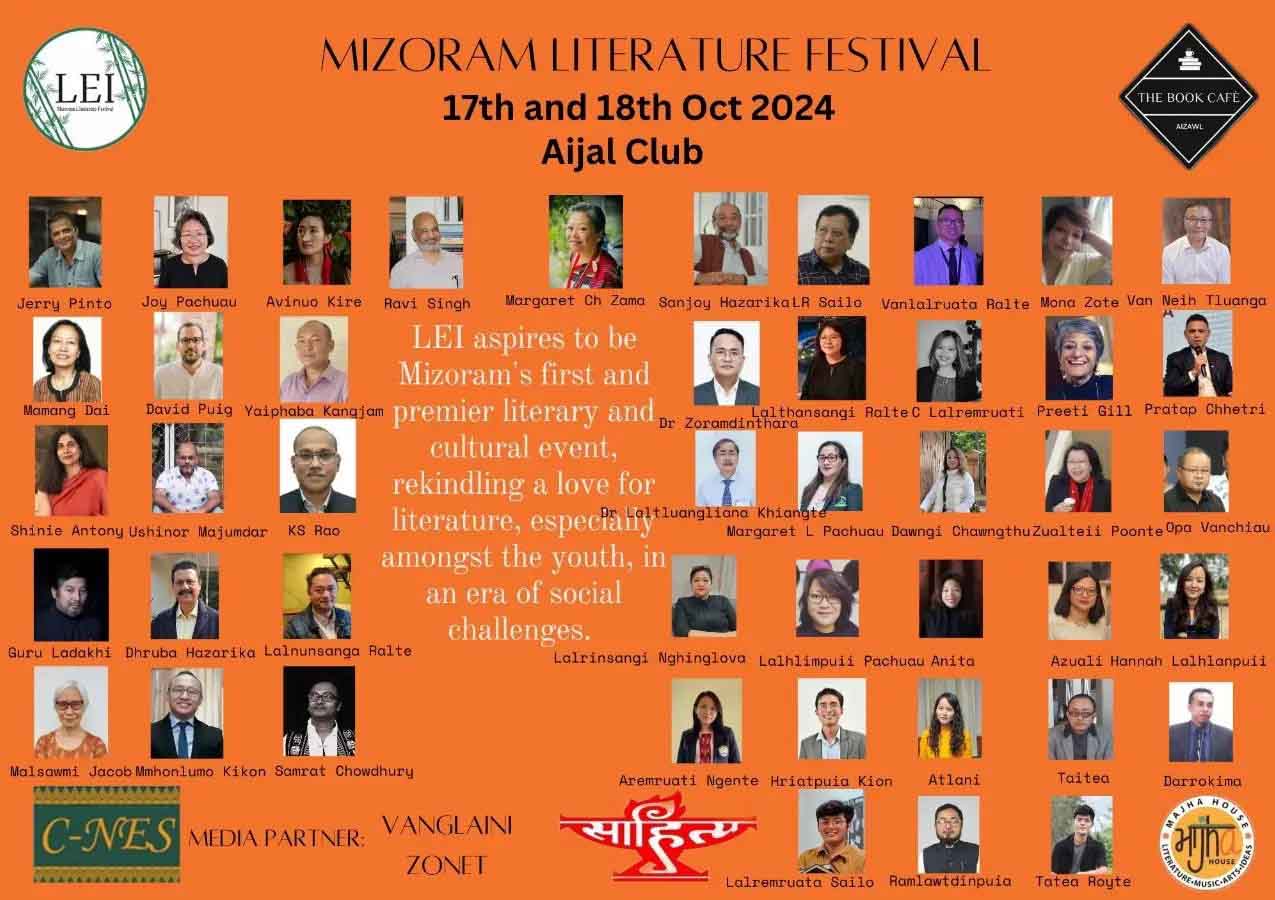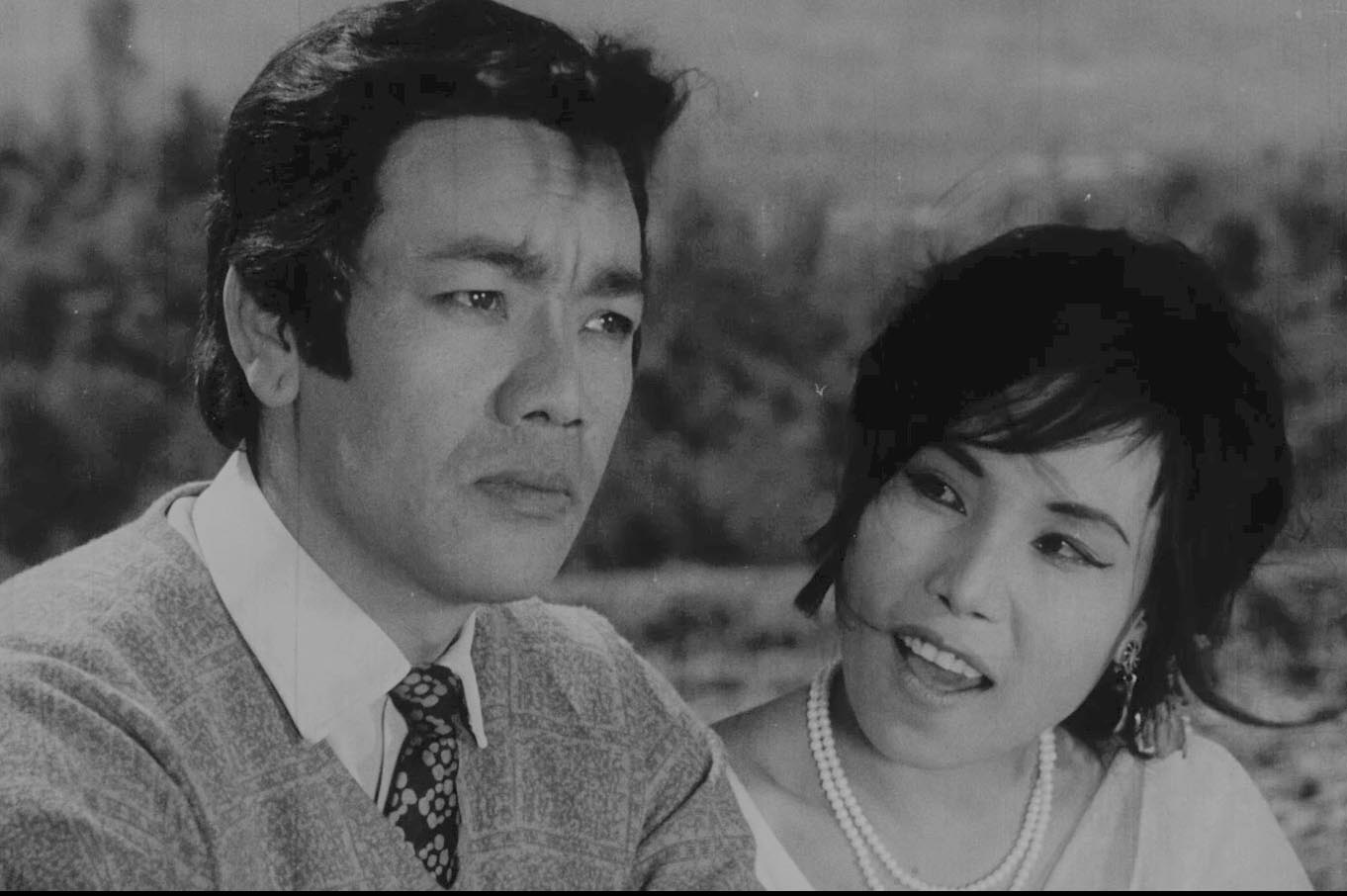(The following is the last part of the ‘Keynote Address’ continuing from the last upload of IRAP, given by the author at the National Dance Seminar organized by JNMDA, Imphal during December 20-23, 2019. It now forms part of the volume “Confluence: Essays on Manipuri Literature and Culture” compiled and edited by B.S. Rajkumar)
The UNESCO has recognised the Manipuri Sankirtana as one of the Important Intangible Cultural Heritage of the World. 1t is a rare and important recognition by a world body.
The Manipuri Raasa Leela is one of the world famous classical dances of India. There are five different types of Raasa Leela-Maha Raasa, Kunja Ransa, Basanta Raasa (Rajarshi Bhagyachandra composed these three), Nitya Raasa and Divya Raasa. The Maha Raasa, which is the supreme of all the Raasa, is based on the Rasa Panchndhyay of Shrimad Bhagavatam. The supreme surrender (Atma Samarpana) is the main theme of the Maha Raasa. It is performed on the day of Kartik Purnima at night. Ti1l now, the present Govindaji Temple Board observes the Raasa regularly every year. (As the Raasa Leela is a well known art form among all, it does not need a further exhaustive narration.)
Manipuri Nata Sankirtana (with other forms) and Raas Leelas (with other kinds) represent the supreme flowering of the Vaishnava faith and are the richest classical traditions in human history. The two art forms are the gifts of the Manipuri genius to the world.
To understand the Manipuri dance and music for all, I now will dwell on some of its distinctive features and aesthetics:
- The Manipuri dance and music is Mandapa (temple) oriented; the artistes perform in front of the deities; the rituals are connected with the worship, and the venue of a temple environment are essential and very impor
- The Manipuri dance and music is very unique in the sense that it is highly devotional and spiritual; it is not sensuality and not a mere entertainment either; it is symbolic and intuitive; the Shringar and Bhakti rasas are the predominant rasas.
- It has a distinctive regional character and idiomatic essence; it is deeply rooted to the soil and other ethnic characteristics; the ethnic dimension is very dominant, and so very impor
- What is the soul of Manipuri Dance? The well known scholar Nilakanta Singh says, “The soul of Manipuri Dance lies in its subdued eloquence, subdued movements and eloquent silence”, (Manipuri Dance, 1992). The Manipuri dance style is delicate, graceful, soft and lyrical. It incorporates both masculine and feminine modes of presentation. There is no lack of expression in Manipuri dance. It has a distinctive expression of its own, a kind of Manipuri style (Abhinaya) pervades it.
- The Manipuri dance and music does not strictly follow the rules of the Natya Shastra and other Shastriya tradition Only the idea essence (bhava) is extracted and it is expressed in a distinctive regional idiom and style. E. Nilkanata Singh says, “The gurus recast these in their minds colour and assimilated them creatively ... It assumed a new birth.”
- The dress and costumes play an important role and it is an integral part of the dance and music. It is designed to suit the main theme and philosophy of the dance. It has a close connection with the religious beliefs and mythological motifs.
- The Chali and Bhangi are the basic movements in Manipuri Classical Dance. Many other techniques are also used to express the moods and emotions.
- The Manipuri Dance and music uses circular and rounded movements and choreography among others. John Parrat carved out a possible philosophy underlying this types of choreography; he remarks, The coils of ancestor Pakhangba in the form of python or serpent are the running theme, which dominates so much on the aspects of Meitei The coil or the spiral is an underlying symbol of the Meitei People. (The Coils of Pakhangba, 2017). The symbolic meaning of the serpentine movement is the meeting point of the beginning and the end of creation; the endless process of time, always on the move never at a fixed standstill.
- High pitched voice, cooing, warbling and trilling in singing (Khonjel wangna shapka, hekpa, chingba etc.) is the soul of Meitei ishei (Meitei ishei, folk song).
- The geography, the natural beauty of the land, the mountains, hills, rivers, naturalistic, soft and gentle movements are reflected in the dance and music.
- The inner essence of Manipuri dance and music is the combination of harmony and happiness; the unity of body, soul and spirit. With it the aesthetic beauty and pleasure evolve from the
Art is a continuous process; it is not static, rather it keeps changing with time. It is an endless pursuit for realising the meaning of human existence and the supreme beauty. At the same time, art will ever remain a contemporary prodigy.
As time paces on, many a change has come in the society as well as in the general livelihood and life-style. Due to this, Manipuri dance and music is facing various odd situations. Not only Manipur but also all over India are these obstacles affecting common problems for all. The crux is that there is an increasing lack of touch for the younger generation with the tradition of old times; hence their decreasing knowledge of traditional values and indifference towards it. Under the sweeping wave of the modern atmosphere, life has become fast and speedy; people are after quick, weIl being, rapid success and swift absorption in jobs; as a result of these, people tend to lose the intention of learning seriously, studying heart and soul, and going for research keenly. This trend of thoughts caused extensive breach in the domain of art and culture.
Now one can remark that there is no more of professional dancer or artiste in Manipur. As a matter of fact, our system cannot produce too a professional dancer. How can a dancer survive? This is a big question. In these days, for art, to survive in its own without the patronage of the state, is an impossible notion. Till today there is no cultural policy handed out by the state.
As a result, constant demand by the present days, Manipuri dance and music has left temples, and has set foot on modern stages. This brought to a huge change and situation to bring various challenges. Manipuri dance once turned out victorious; could face and overcome its sad plight. Now it is alive, is varying on; and is producing several compositions fresh, beautiful, artistic and innovative. Something I would like to say at this stage is that we require a steadfast emergence of a well agreed and a well defined structure of this popular Manipuri solo dance. Along with it, we further need to work hard to produce a well talented solo dancer and choreographer. The same goes true in respect of dance drama as well.
Keeping an eye for a proper teaching on the dance, appropriate for the present days, as well as facilities for a depth research on it, we need to proceed further. The cultural heritage of the Manipuri dance and culture is very rich and vastly extensive. There is still a big room to go into further areas of research. The need for grooming up dance scholars, and dance gurus still remains a necessity.
In fact it is a matter of problem for the world over; to tackle the threatening impact of social media and globalisation on art is posing again another challenging task. We must keep ourselves strongly aware to safeguard the art and culture from such fatalities, which may or might be caused by these agencies. High technology is not our enemy, even then we should remain alert and skilful with the manner how to utilise it suitably.
I always wonder whenever I ask myself, “What! How to define’ Lai Haraoba? What kind of art form is this Lai Haraoba?” Till today nobody is able to remark or describe scientifically and satisfactorily what it is. Who knows if Bharata Muni happened to watch and observe this’ Lai Haraoba’, the world’s most ancient yet a living tradition, he would have created and written a new Natya Shastra! We are eagerly waiting for the emergence of a new Bharata Muni.
Right now what we need to is a most important task keep the tradition of Manipuri dance and music safe. None should in any manner try to damage and destroy the soul of the Manipuri dance and music. A new creation or new experiment within its tradition without damaging the soul of the Manipuri dance and music can be carried out, but again I repeat it should be within the parameters of its soul and tradition. And it should be worth carrying out new experiments.
Look East Policy, a new policy indeed! Some new meaning, some novel idea may emerge, I believe, if we study and look through our Manipuri dance and music from the view-point of the traditions of the South East Asian countries. This is where we should keep it as a field of vigil.
As my condudling remark, I would like to assert that the art form, which we call ‘Lai Haraoba’, possesses all the required criteria adequate for enlisting it in the annals of UNESCO’s Intangible Cultural Heritage. People must work hard with a will that Lai Haraoba is enlisted in such type of UNESCO’s chronicle next to Manipuri Natasankirtana.



